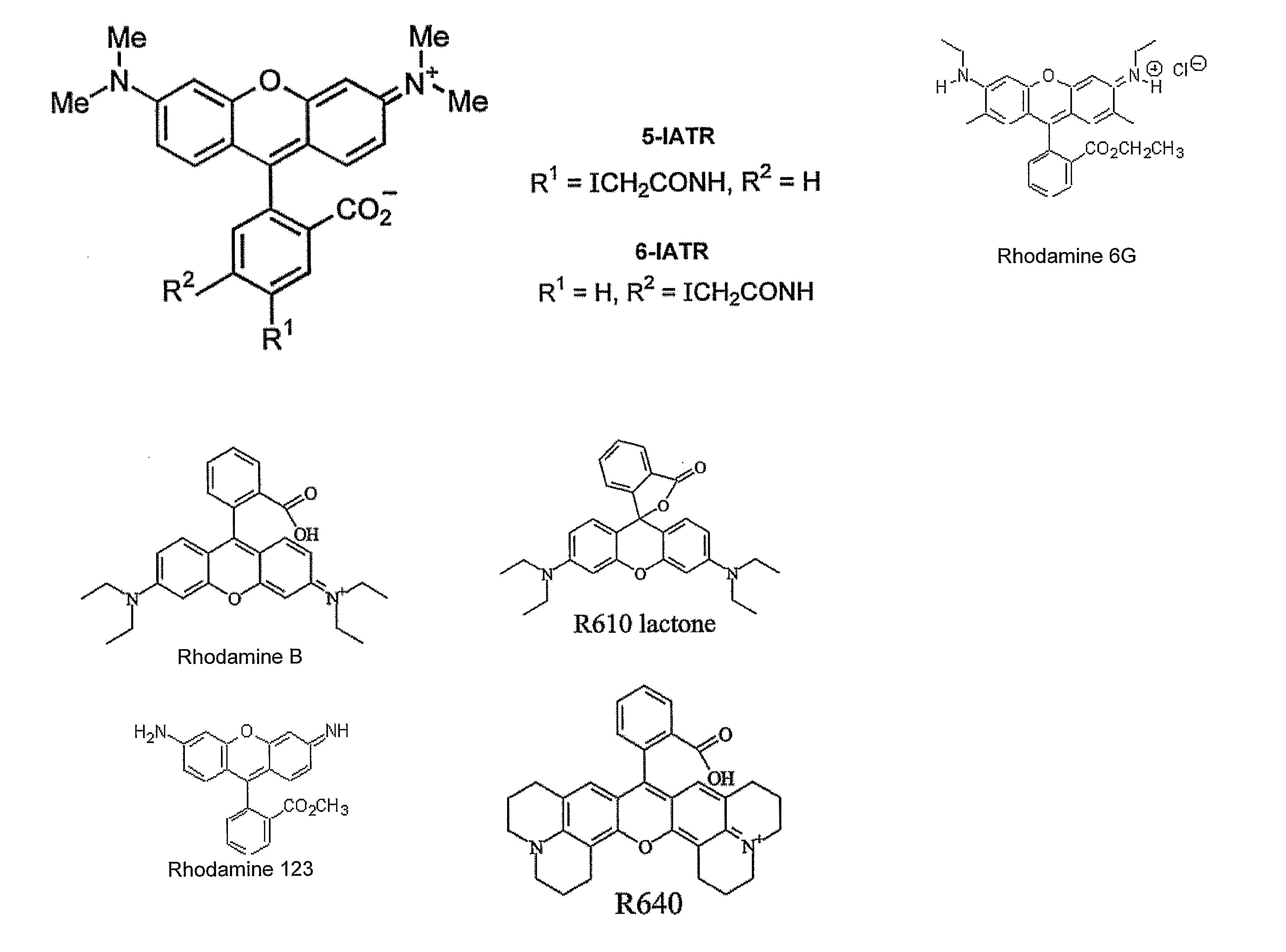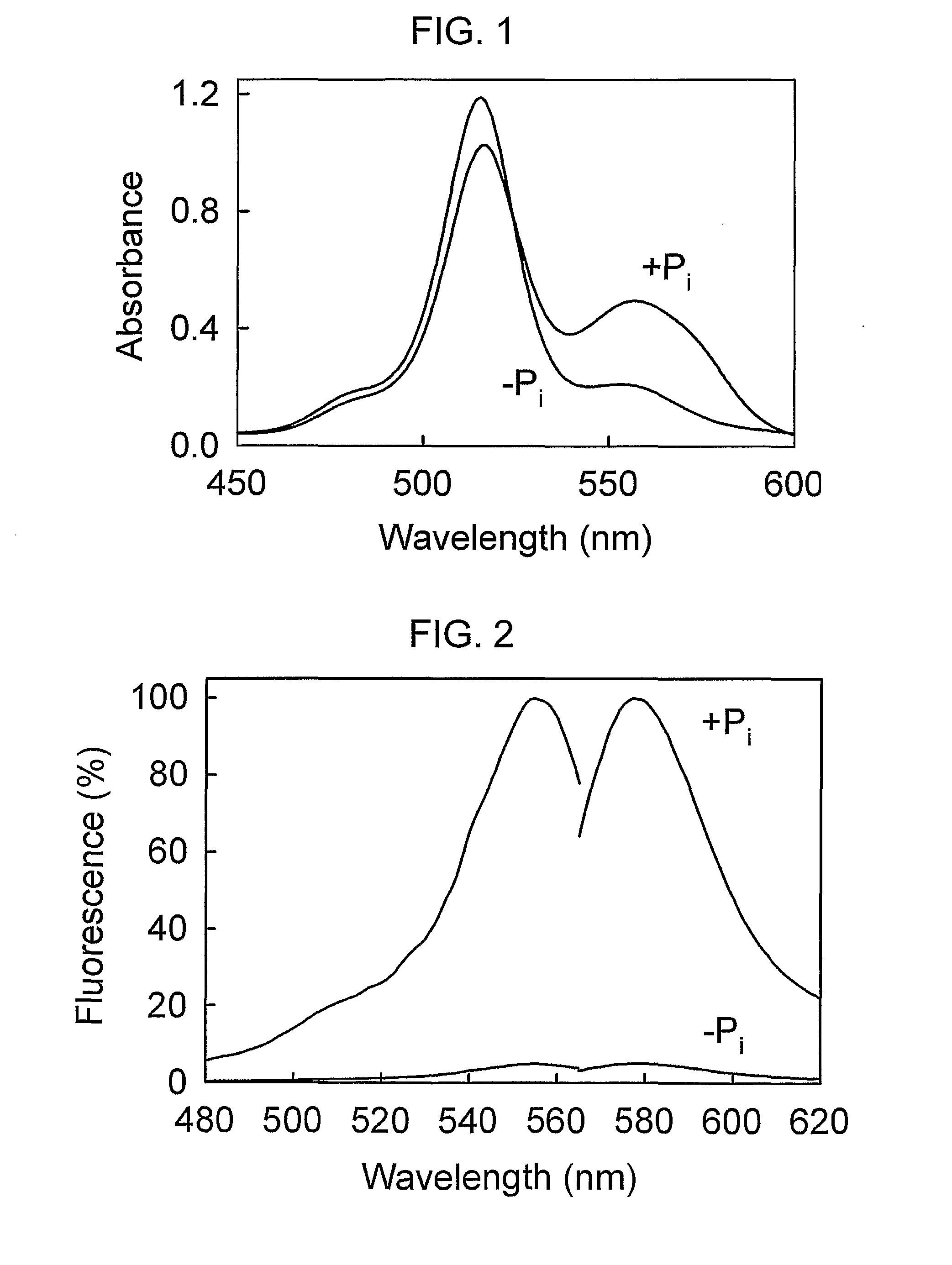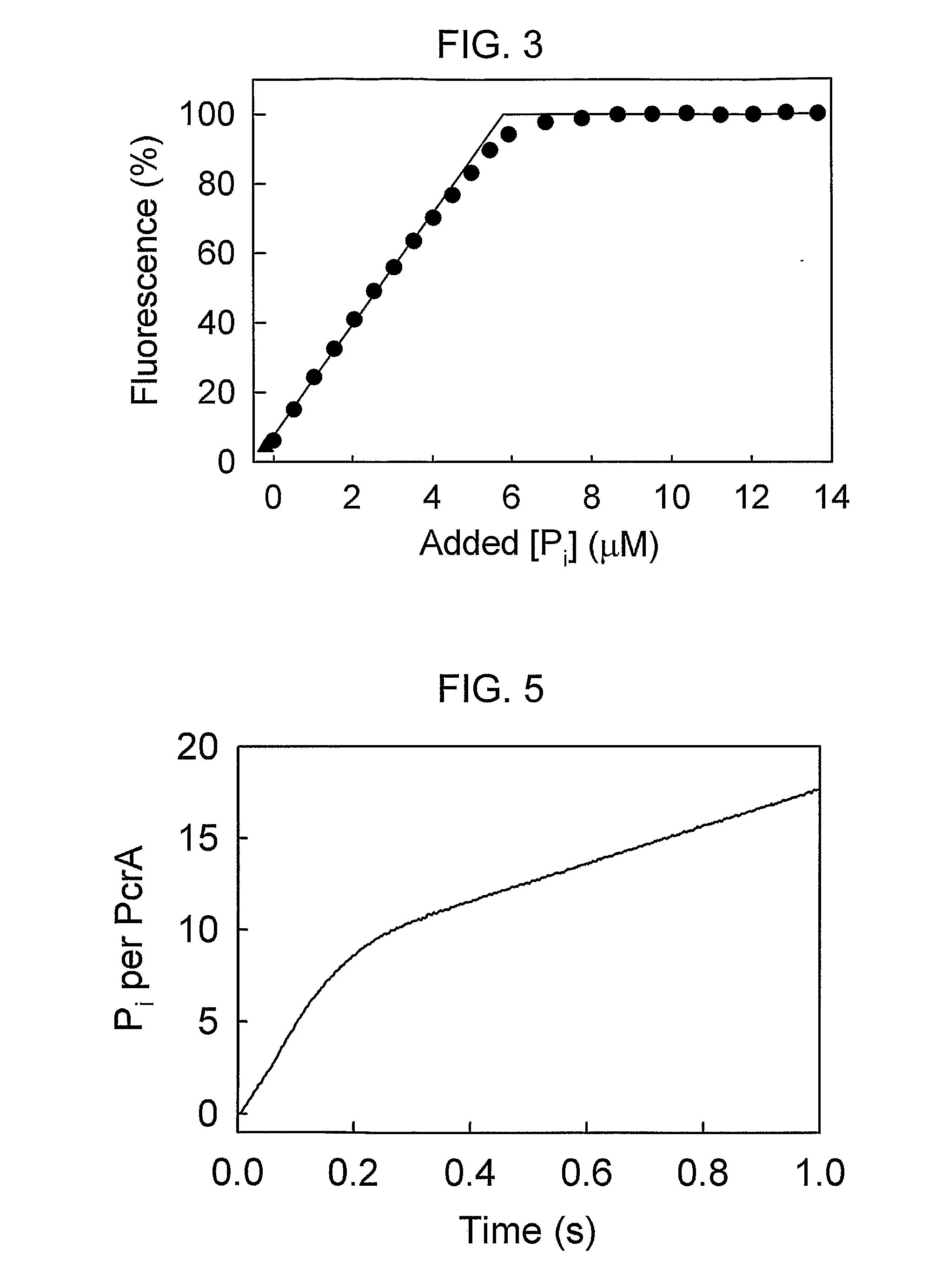Inorganic phosphate assays
a technology of inorganic phosphate and assays, which is applied in the field of inorganic phosphate detection and quantification, can solve problems such as detectable changes, and achieve the effect of improving detectable changes
- Summary
- Abstract
- Description
- Claims
- Application Information
AI Technical Summary
Benefits of technology
Problems solved by technology
Method used
Image
Examples
Embodiment Construction
Preparation of Mutant PBPs
[0103]In order to implement the labeling strategy, it was decided to introduce two thiols into E. coli PBP that could be readily labeled with rhodamines. That was most likely to be achieved with cysteines that are exposed at the surface. Furthermore, the cysteines should be sufficiently close so the rhodamines can interact with each other. The distance between them should change between the phosphate-bound and phosphate-free structures to enable there to be a possibility of a change in extent of interaction.
[0104]Wild-type E. coli PBP has no cysteine residues for covalent attachment of labels, so two thiols were introduced for labelling with rhodamine. For selecting a suitable pair of residues, two crystal structures of PBP were used: (a) MDCC-labelled PBP with bound Pi [29]; and (b) a mutant PBP with reduced affinity for Pi, which enabled a high resolution structure to be obtained of Pi-free PBP [6]. Examination of these structures enabled the choice of se...
PUM
| Property | Measurement | Unit |
|---|---|---|
| pH | aaaaa | aaaaa |
| pH | aaaaa | aaaaa |
| pH | aaaaa | aaaaa |
Abstract
Description
Claims
Application Information
 Login to View More
Login to View More - R&D
- Intellectual Property
- Life Sciences
- Materials
- Tech Scout
- Unparalleled Data Quality
- Higher Quality Content
- 60% Fewer Hallucinations
Browse by: Latest US Patents, China's latest patents, Technical Efficacy Thesaurus, Application Domain, Technology Topic, Popular Technical Reports.
© 2025 PatSnap. All rights reserved.Legal|Privacy policy|Modern Slavery Act Transparency Statement|Sitemap|About US| Contact US: help@patsnap.com



